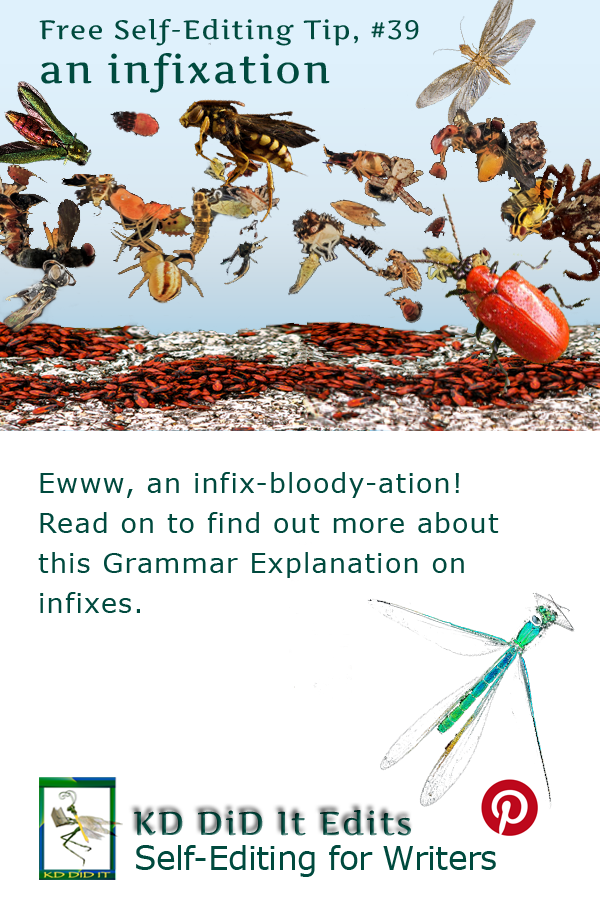Revised as of
10 Feb 2023
An infix is most commonly used to intensify swearing, I abso-blinkin-lutely swear it. I know you’ll recognize this in certain expressions, which are usually used in unexpected or aggravating circumstances by emotionally aroused English speakers.
Naturally, there are other examples of infixation: pluralizing open and hyphenated compound words and swapping words around to create a intensified effect.
To be fair, infixation is a relatively new concept, and you should be safe looking at the rules for compound words.
Grammar Explanations is . . .
. . . an evolving list of the structural rules and principles that determines where words are placed in phrases or sentences as well as how the language is spoken. Sometimes I run across an example that helps explain better or another “also known as”. Heck, there’s always a better way to explain it, so if it makes quicker and/or better sense, I would appreciate suggestions and comments from anyone on an area of grammar with which you struggle or on which you can contribute more understanding.
If you found this post on “Infix” interesting, consider subscribing to KD Did It, if you’d like to track this post for future updates.
| Infix | ||||||||||||||||||
| Definition: A group of letters that is inserted within the base form of a word and not at the beginning (a prefix) or the end (a suffix) of a word to create a new word or intensify meaning.
Inserting an infix is called infixation. Affix is a general term for infix, prefix, and suffix. A.k.a. integrated adjective |
||||||||||||||||||
| Tmesis | Definition: The insertion of a word between a word, a compound word, or a phrase by dividing the word or phrase into syllables and inserting the word, usually an expletive or a softer word which intensifies the meaning. | |||||||||||||||||
| Rule: Switching words around to call attention or place an emphasis. | ||||||||||||||||||
|
||||||||||||||||||
| Rule: Commonly employed in words with three or more syllables in an informal situation. The infixed word may use hyphens to set apart the infix or you may choose to treat it as a closed compound. | ||||||||||||||||||
|
||||||||||||||||||
| Pluralizing an Infix | Rule: Some compound nouns that are pluralized may require an s suffix to act as an infix when the head noun is at the start of the compound word. | |||||||||||||||||
| passers-by mothers-in-law attorneys-at-law sergeants major sergeants first class secretaries of state |
||||||||||||||||||
C’mon, get it out of your system, bitch, whine, moan . . . which words are your pet peeves? Also, please note that I try to be as accurate as I can, but mistakes happen or I miss something. Email me if you find errors, so I can fix them . . . and we’ll all benefit!
Satisfy your curiosity about other Grammar Explanations by exploring its homepage or more generally explore the index of self-editing posts. You may also want to explore Book Layout & Formatting Ideas, Formatting Tips, Grammar Explanations, Linguistics, Publishing Tips, the Properly Punctuated, Word Confusions, Writing Ideas and Resources, and Working Your Website.
Resources for Infix
“Tmesis.” Literary Devices. n.d. Web. n.d. <http://literarydevices.net/tmesis/>.
Yule, George. The Study of Language. ed. 3. Cambridge University Press, 2006. Print.
Pinterest Photo Credits:
Going back, I can’t find the sources for any of these images. If anyone knows anything, please contact me.


